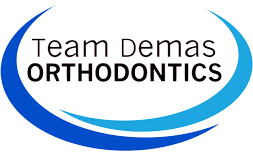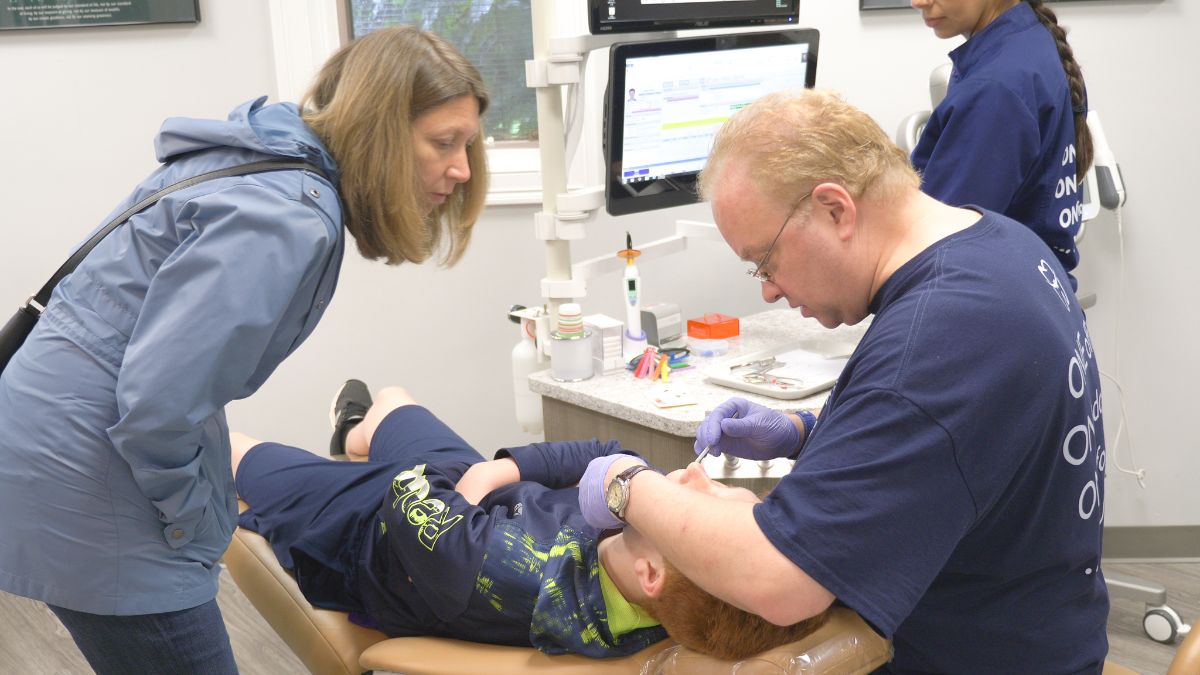
by | Apr 17, 2019 | Orthodontic Treatments, Uncategorized
There’s no denying that families today are busier than ever before. Having to juggle work, school, extracurriculars, and the occasional special event means that most moms have to wear multiple hats, from cook and chauffeur to nurse and referee – plus everything in between! However, there’s one hat you shouldn’t have to wear just because you’re a mother – that of an orthodontist. While your instincts and attention to detail come in handy for crafting the perfect family calendar, your child’s oral health requires expert advice and guidance. That’s where Team Demas Orthodontics comes in!
After graduating from dental school, an experienced orthodontist like Dr. Demas goes through years of additional training in order to become a highly-trained specialist in tooth movement, facial growth, and dental development. This extra training and experience make orthodontists your child’s best bet for a lasting smile that looks and feels great.Even though you’re unlikely to be an expert when it comes to orthodontics, we still want you to feel confident in your choice to seek orthodontic treatment for your child. We know it’s a big investment in their oral health and their smile, so let’s take a look at some of the most important things you should know about orthodontics before you take the first step!(Do you have a child age 7 or above who would benefit from an orthodontic evaluation? Click here to schedule a free exam!)
Orthodontics is about more than a straight smile
Many people believe that orthodontics is about straightening smiles and not much else. This is a common misconception, but in reality, orthodontic treatment addresses much more! Because straight teeth aren’t the only indicator of a healthy smile, orthodontics focuses on the diagnosis, prevention, and correction of malpositioned teeth and jaws. Orthodontists like Dr. Demas know to go beyond the surface of a smile to examine not only a patient’s teeth, but the movement and growth of their jaw as well. They’re also able to observe the teeth as they develop. This allows them to check for any impacted, missing, or overcrowded teeth that may otherwise go unnoticed until they begin causing problems.
Children should have an orthodontic evaluation by the age of 7
Orthodontics is most often associated with teens, so it can come as a surprise to learn that the American Association of Orthodontists recommends kids have their first orthodontic exam by about age 7. Even though their mouths are still developing, and they generally have a mix of baby and permanent teeth to deal with, it turns out that’s actually the point! Seeing children around this age means we can pick up on potential problems before they become a big deal. This can lessen or eliminate any negative impact on your child’s permanent teeth and bite.
We treat many young patients here at Team Demas Orthodontics, and have seen firsthand the positive difference preventive care makes. Starting treatment at the right time can make a positive difference in a child’s oral health, and even though children won’t require any active treatment, an early exam lets us check for a number of issues to determine if and when orthodontic treatment is indicated.
Pick an orthodontic office your whole family is comfortable with
Depending on the type of treatment, most patients will need to be seen every 6-8 weeks or so throughout the orthodontic process. Since you’ll be spending quite a bit of time there with your child, it’s important to find an office you feel comfortable with! Our beautiful Southington office is bright, relaxing, and state-of-the-art, so you can be sure you’re getting the most efficient treatment possible along with the best results.
For your convenience, we offer morning, afternoon, and Saturday appointments to accommodate your busy schedule. We’re also conveniently located so you can get back to work, school, or home as soon as possible after your child’s appointment. Our whole team is committed to creating a warm, welcoming environment and a positive, stress-free experience from your first appointment with us to your last!
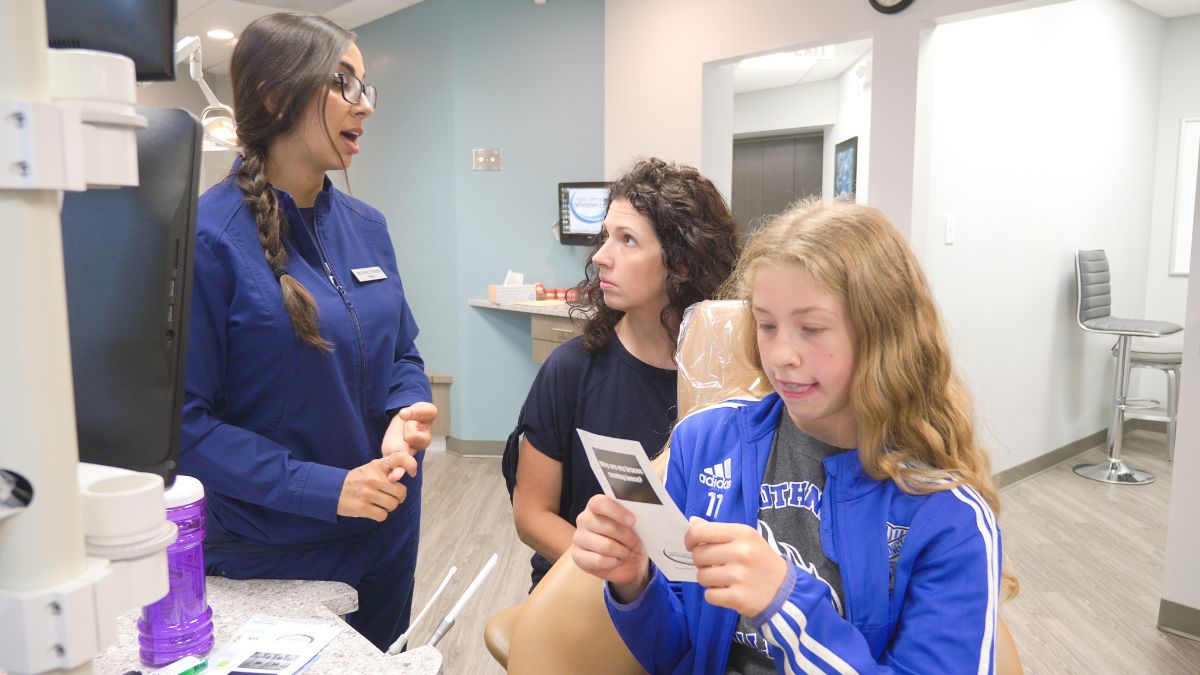
Multiple treatment options are available
Modern orthodontics have come a long way in recent years. At Team Demas Orthodontics, we combine innovative technology with cutting-edge techniques to help patients of all ages achieve a straighter, healthier smile. We offer the following treatments from our Southington office.
Traditional metal braces
Metal braces are typically composed of stainless steel brackets, wires, and bands that work together to gently guide the teeth into the desired positions over time. Today’s braces are smaller, lighter, and more comfortable than previous versions. They can also be personalized by choosing elastics in a wide variety of fun color combinations.
Traditional metal braces tend to be the most widely used orthodontic treatment, and with good reason! They are a reliable, effective, and economical option for straightening smiles and improving oral health. Metal braces are especially useful for cases that are more severe or complicated.
Ceramic braces
Ceramic braces are also referred to as clear braces, tooth-colored braces, or esthetic braces, and they work the same way that metal braces do. While they utilize the same components as traditional braces, the brackets on the front side of the teeth are made of a translucent ceramic material that blends in with the natural color of your teeth. When paired with clear, white, or tooth-colored elastics and ties, ceramic braces can offer patients an incredibly inconspicuous treatment option!
While ceramic braces are tough like metal braces, they are more prone to chipping and cracking. For this reason, we generally only recommend them for older teens and adults.
Invisalign clear aligner therapy
Instead of brackets and wires, the Invisalign system uses a series of clear, customized aligners that are nearly invisible and completely removable. The aligners are composed of a soft but strong thermoplastic resin designed to fit snugly over the patient’s teeth, which helps to avoid much of the friction and abrasions that braces can cause. As the teeth begin to shift, the aligners will be changed out approximately every 1-2 weeks to keep up with this movement.
Unlike braces, which are a fixed appliance and cannot be removed, Invisalign relies almost entirely on patient compliance to work properly. Aligners must be worn 20-22 hours every day, throughout the course of treatment, in order to get results. The Invisalign system tends to work best for mild to moderate orthodontic issues, so it may not always be a suitable choice for patients who have more severe or complicated cases.
Treatment times will vary from patient to patient
When it comes to treatment times, there is no “one size fits all” answer. This is because every patient has their own unique smile, and will respond to treatment in their own way. The length of time your child will require treatment will vary based on their own specific case, with factors such as the severity of the problem, the health of their teeth, gums, and supporting bone, and how compliant they are playing a part. We can tell you, however, that on average, braces tend to be worn for about 12 to 24 months, while Invisalign treatment averages about 12 to 18 months.

Give your child the gift of a healthy smile with Team Demas Orthodontics
As a mom, we know that you want nothing but the best for your child, and that includes a beautiful, healthy smile that will last them a lifetime! If you’re in Southington or the surrounding communities and want to explore more about orthodontics for your child, get in touch today to schedule a FREE exam! We’d love to meet you both, and are excited to get your child started on the road to improved oral health and a smile they’ll want to share with the world.
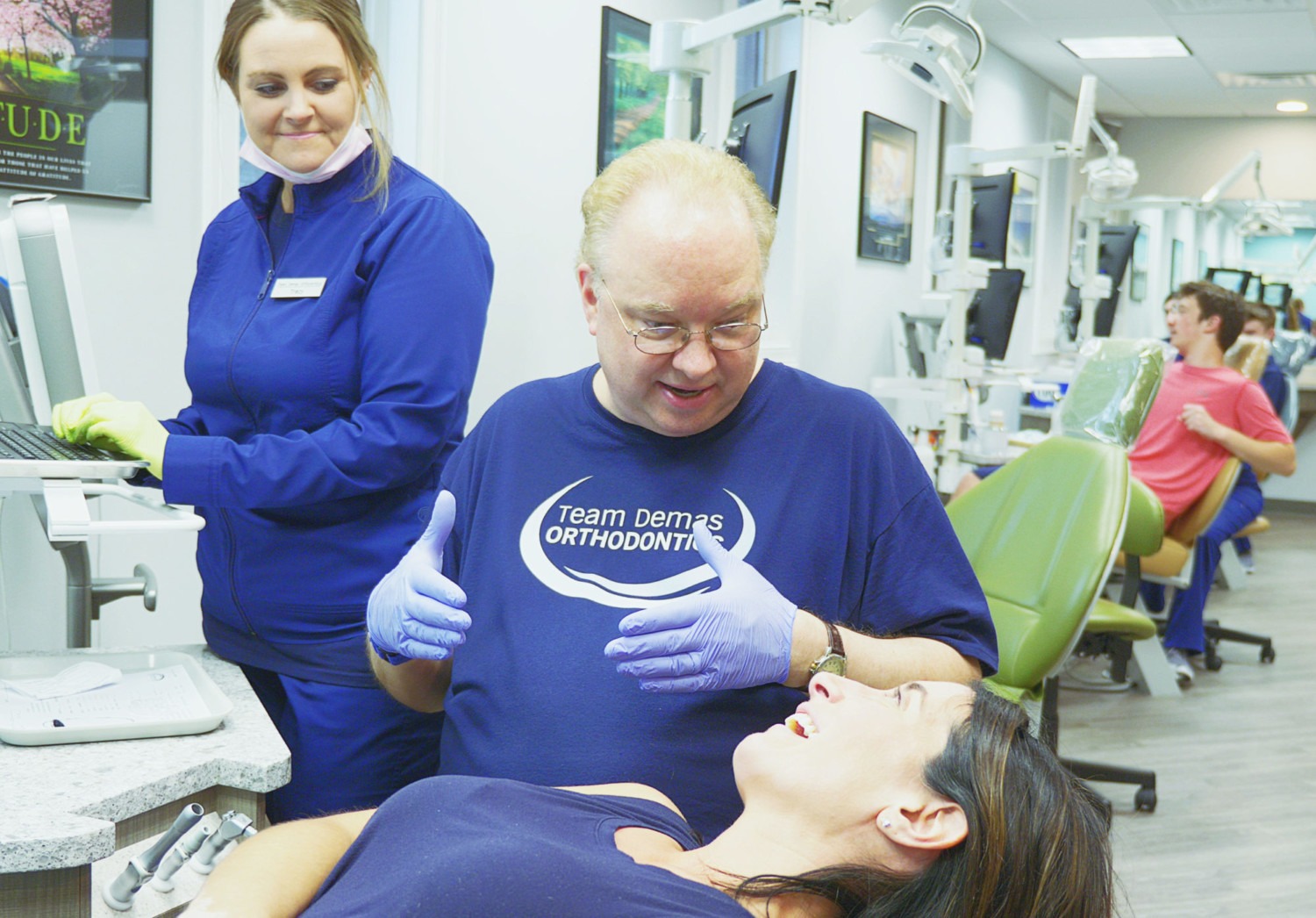
by | Feb 28, 2019 | Uncategorized
Most of us are aware of the many ways a balanced diet is important to our overall health. But did you know that what you choose to eat and drink can also play a role in your oral health? At Team Demas Orthodontics, we’ve been straightening smiles for over 20 years, but that’s only one part of what we do. We’re here to help you improve the health of your teeth and gums, too!
Orthodontic treatment is one way to achieve this, but a nutritious diet is also an important part of the process. To give you a better understanding of how nutrition and oral health are linked, we’re going to take a look at how good foods can protect your teeth, how a poor diet can negatively affect them, and what you should aim to eat in order to maintain a healthy, happy mouth. Keep reading below to learn more!
Nutrition as a building block of oral health
Nutrition can affect our oral health before we’re ever even born. When an expectant mother consumes food and drink containing nutrients like calcium, vitamin D, phosphorus, and protein, it helps a baby’s teeth begin to form and mineralize properly. It doesn’t stop there, though. Throughout the teen years, our teeth continue to develop and mineralize, and over the course of our life, the oral tissues are constantly recycling. To support this process successfully, we need to consume a variety of vitamins and minerals. One of the easiest ways to do this is by eating a healthy diet!
When you get right down to it, good nutrition is not only a building block of oral health, it could also be considered a preventative measure. Nutritional deficiencies have the potential to reduce your resistance to dental disease, and also inhibit your body’s ability to fight certain types of infection. Your overall diet can help prevent tooth decay and enamel erosion….or it can contribute to it! That’s because human mouths are naturally hospitable to all different kinds of bacteria. While many of these are helpful, there are also some that can be harmful.
Many of these more harmful microorganisms thrive on the sugar in your diet. As they process this ingested sugar, the bacteria begin to produce acids that can eat into the enamel of your teeth. This can set the stage for small holes forming, better known as cavities. If left untreated over an extended period of time, tooth decay can worsen. It may become painful, and it can cause teeth to loosen or even fall out eventually. This is one of the biggest reasons for avoiding too much added sugar in your food and drinks.
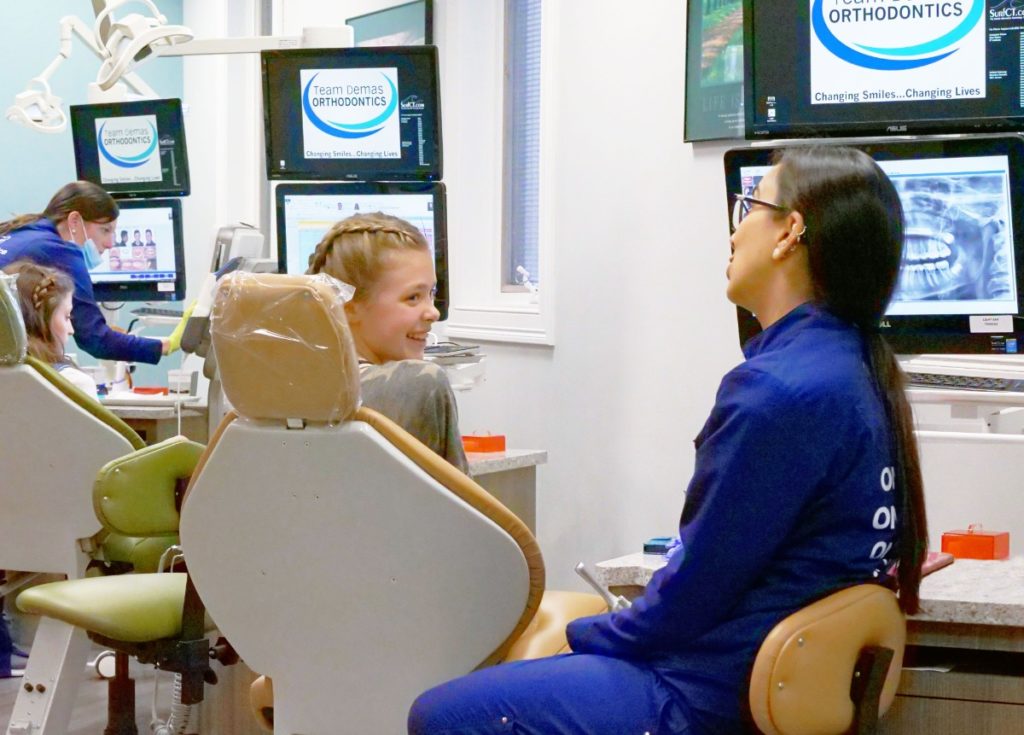
Adopt a healthier diet for a healthier mouth
Fortunately, concerns about sugars in certain foods such as whole grains, fruits, and vegetables are unfounded. There is no evidence that these naturally occurring sugars are harmful to the teeth, even in starch-rich staples like bread, rice, and potatoes. This is good news for your smile since these items can be excellent sources of healthy vitamins and minerals! Foods like this can benefit your overall health in a number of ways, but more specifically, they strengthen your teeth and help protect enamel. Even better: they’re also safe for braces, if you wear them!
Here’s a brief rundown on how healthier choices in your diet can give you a brighter, stronger smile, and improved oral health.
Milk and other dairy products
This is hardly a chore, because who doesn’t love cheese? But besides being delicious, dairy products like milk, cheese, and yogurt make excellent snacks, and pack a punch of calcium that will help to keep your bones and teeth strong and healthy.
Whole grain bread and pastas
Complex carbohydrates contained in certain whole grains give bacteria less digestible food to grow on. They also possess a bunch of different nutrients to help your mouth stay healthy.
Chicken, red meat, and fatty fish
Though we usually hear about these foods in terms of the protein they offer, they also contain phosphorus, which is a vital component in strengthening your teeth and protecting the tooth enamel.
Fresh fruits and vegetables
Eating a rainbow of fruits and veggies is one of the best things you can do for yourself! Leafy greens are particularly good for your oral health since they contain high amounts of magnesium, vitamin A, vitamin C, beta carotene, calcium and magnesium. These minerals are instrumental in improving and maintaining oral health.
Water
We may drink a ton of sodas, juices, and sports drinks in this country, but they are notorious for leaving behind sugars that are a banquet for bad bacteria. As the bacteria devours this sugar, it produces acid that can eat away at the enamel of your teeth. Sodas and juices can also have phosphoric, citric, or malic acids added to them, which can exacerbate any enamel erosion you’re already experiencing.
On the other hand, water is wonderful for your oral health. It protects your mouth by washing away any leftover food and debris that bacteria typically flock to, and it also dilutes the acids produced by the bacteria in your mouth. Suffer from dry mouth or bad breath? Drink more water! Although drinking water throughout the day is no substitute for a regular oral hygiene routine, it can go a long way towards keeping your mouth clean, healthy, and free from cavities.
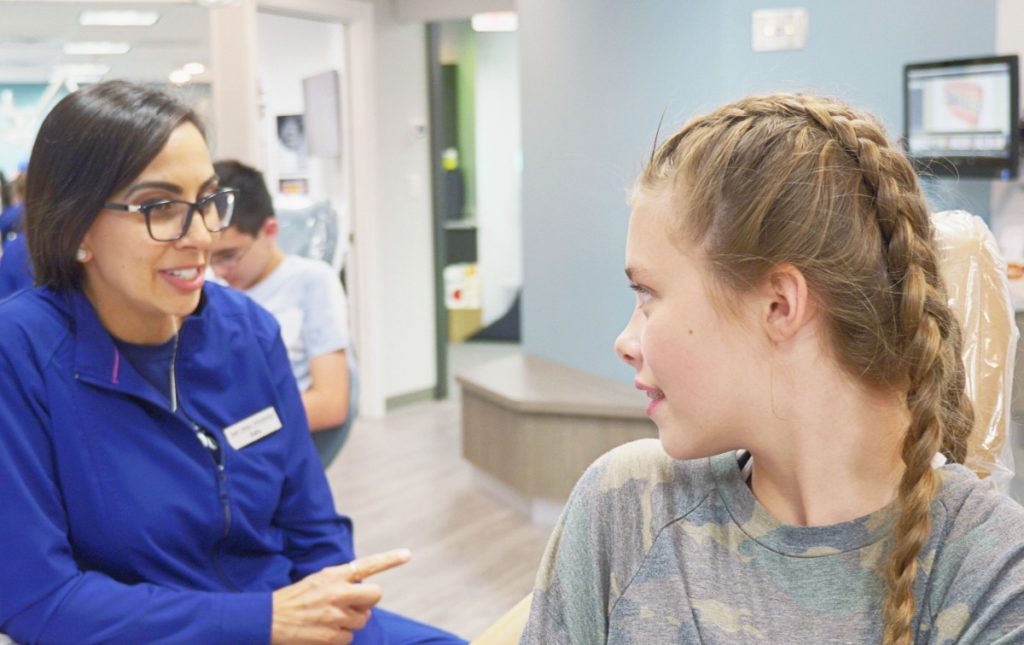
What’s the best diet for your smile?
This is a tough question to answer, because the best diet will vary from person to person, and depends mainly on age, gender, height, weight, and fitness. That said, most people will benefit from the following concepts.
Variety
Don’t fall for any diets or advertisements that tell you any single food, drink, or shake can meet all your daily requirements. Eating a variety of foods and washing them down with water is the only way to hit nutritional milestones. It also makes mealtimes much more interesting!
Balance
In order to maintain a balanced diet, you should aim to eat a variety of foods from each of the five major food groups daily. This includes:
- whole grains
- fruits
- vegetables
- lean sources of protein such as lean beef, skinless poultry and fish, dry beans, peas, and other legumes
- dairy foods
Additionally, you may want to look at limiting the number of snacks you eat in between meals. When you do feel hunger strike, try to choose something healthy instead of packaged or processed foods, such as a fruit, vegetable, or a piece of cheese.
Moderation
Your teeth aren’t the only reason to pay attention to any excess snacking! It’s not just what you eat that affects the level of acidity in your mouth; when you’re eating matters, too. Foods that are eaten as part of a meal actually cause less harm to the teeth than eating lots of snacks throughout the day, because more saliva tends to be released during a meal. That extra saliva helps to wash foods from your mouth, and also neutralizes any harmful acids being produced.
In general, foods and beverages should be consumed in the appropriate serving sizes whenever possible. This is especially important when it comes to anything that’s heavy on added sugar for all the reasons we’ve outlined above!
Let Team Demas Orthodontics help you find your healthiest smile
It’s undeniable that what you choose to eat and drink can have a powerful impact on your oral health, for better or worse. While we can provide the orthodontic treatment to give you a straighter smile, you can improve your own oral health by adopting a healthier diet. This has the benefit of improving your overall health, too! If you’re in Southington or any of the surrounding communities, and want to learn more about how good nutrition can improve your oral health, get in touch with us today! We’re always happy to educate patients on ways to improve their oral hygiene at home for a bright, sparkling smile!
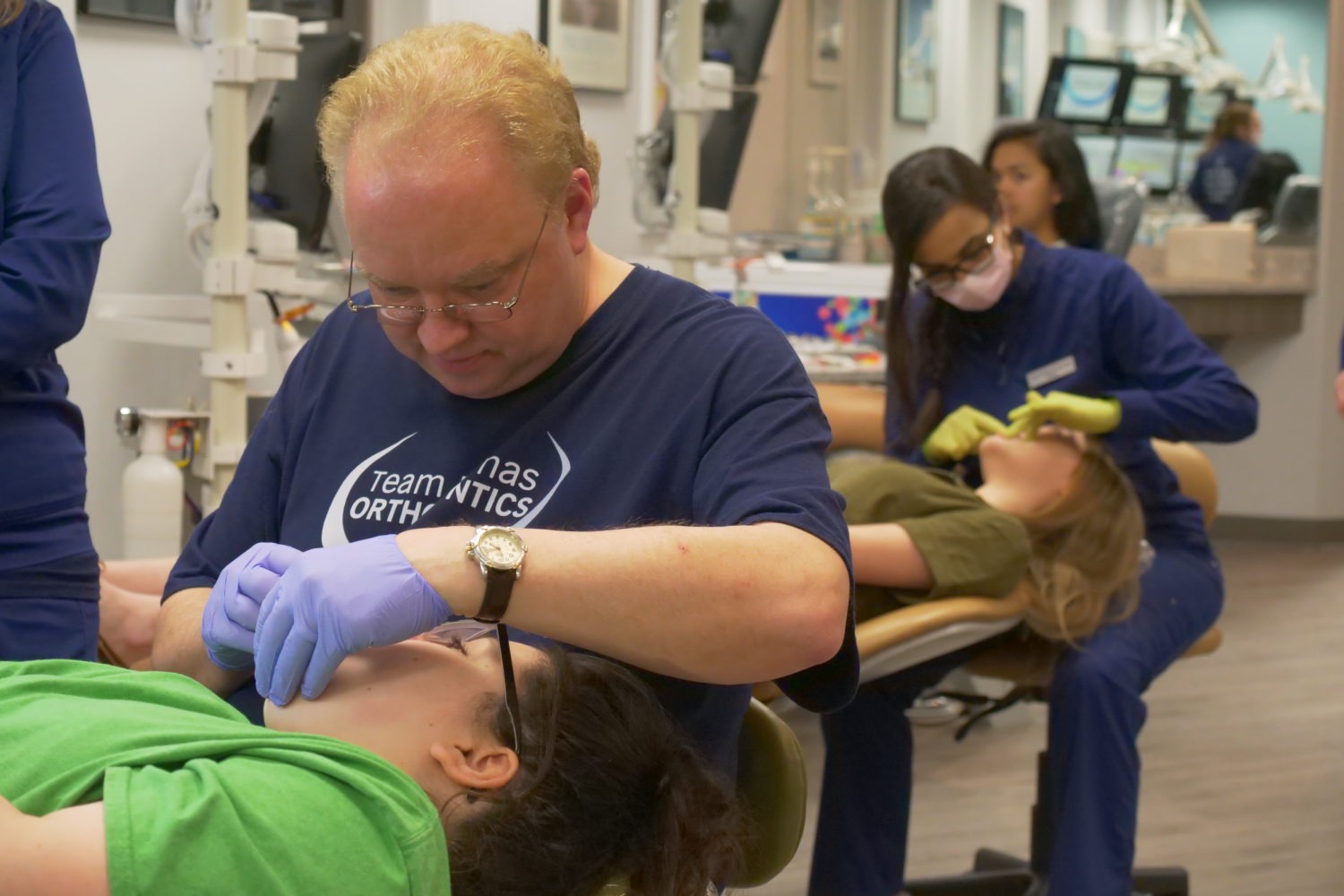
by | Feb 13, 2019 | Orthodontic Treatments
Are you new to the world of orthodontic treatment? Or have you been wearing braces for a while and consider yourself something of an expert? At Team Demas Orthodontics, it’s important to us that all of our patients, from brand new to most experienced, feel confident in their knowledge of the treatment process. It’s equally important to us that you are informed about some of the issues that can occur when undergoing orthodontic treatment with braces. While true orthodontic emergencies are rare, they do occur from time to time. It’s helpful for our braces patients to know how to proceed in the event of any of the following orthodontic emergencies:
- serious injury or trauma to the face, neck, mouth, teeth, or gums
- swelling, infection, or bleeding of the gums or mouth
- severe pain or discomfort in your teeth, mouth, face, or neck
If you experience any of these symptoms while in braces, we encourage you to seek from a qualified provider help as soon as possible. If you’re a current patient, we recommend you start with our Southington office, or even your general dentist. However, please don’t hesitate to visit an urgent care clinic or emergency room if you feel that’s your best option. While some patients are concerned that their orthodontic process will be interrupted or delayed by emergency treatment, we can always pick up where we left off, or adjust your treatment plan once the emergency has passed.
Not sure about what constitutes an actual emergency? It’s not unusual to question what type of situation would require an immediate ER visit versus when it would be advisable to “wait and see” how things go. One good example of this would be a fractured tooth. This would require immediate diagnosis and treatment. The same is true for any severe pain or swelling around your teeth, jaw, or mouth, as this can be a sign of infection or disease.
Thankfully, serious emergencies tend to be few and far between! While having a plan in place for an emergency is always recommended, a number of more minor issues can be remedied from the comfort of your own home. Though they may not always be able to eliminate all the pain, discomfort, or irritation you’re experiencing, home remedies can be very effective at lessening or relieving your symptoms until we can see you in our office.

Treating non-emergency issues
To help you know what to look for and how to treat some of the most common minor “emergencies” or sources of discomfort, we’ve compiled a list of them below, as well as tips on how to handle them from home. Keep reading to learn more!
Mouth sores
While orthodontic treatment itself doesn’t cause mouth sores, some patients do seem to be more susceptible to them while they’re in braces. If you find yourself struggling with painful ulcers on your cheeks, lips, tongue, or gums while you’re wearing braces, you can get some relief by swabbing a small amount of topical anesthetic directly to the sore. This can be reapplied as often as needed, just be sure to follow the instructions included with the packaging.
Loose or broken brackets, bands, or wires
If any part of your braces comes loose or breaks during treatment, please contact our office as soon as possible so we can determine what your next steps should be. In the meantime, there are a few guidelines you can follow to keep your braces and your mouth safe.
If a band or bracket is broken but still attached to the wire, try to leave it alone until you can be seen. Don’t connect any elastics to it. Components that are causing irritation can be covered with a small amount of orthodontic wax, but remember to remove it when you’re brushing your teeth, then reapply it as needed. If any piece of your braces has completely broken off, we ask that you place it in a secure bag and bring it with you to your appointment.
Misplaced archwire, bracket, or tie
As your treatment progresses and your teeth begin to move, the archwire connecting them may also shift. This can result in it poking out a bit near the back of your mouth, irritating your cheeks or gums. You can use the eraser end of the pencil or a clean cotton swab to gently move it back into the correct spot.
If your wires or ties move, they can often be gently manipulated back into place using a pair of clean tweezers or the eraser end of a pencil. For wires or brackets that have shifted and are irritating the inside of your mouth, try a pinch of orthodontic wax over the parts that are poking out to help relieve the immediate discomfort. Don’t forget to contact us as soon as you can so Dr. Demas can determine what’s actually going on and correct it.
Tooth pain or loosening
Although your teeth loosening slightly can be a little scary, it’s common during orthodontic treatment, and is actually exactly what we want them to do! However, this movement can sometimes cause mild tenderness. This may be especially noticeable right after your braces are put on, or following an adjustment appointment. Salt water rinses are a great home remedy that is tried-and-true for relieving soreness. Simply mix one teaspoon of salt in 8 ounces of warm water, then swish it around your mouth for about 30 seconds before spitting it out. A warm washcloth or heating pad placed on the outside of your jaw can offer some pain relief as well.

In the event of a true orthodontic emergency, you should seek treatment from an experienced and qualified orthodontist like Dr. Demas as soon as possible. But we know that even minor emergency situations can be upsetting to patients! That’s why our whole team is dedicated to creating an orthodontic experience that is safe, stress-free, and rewarding for you. Because we build beautiful smiles for patients of all ages daily, we know that the process doesn’t have to be painful. If you’re experiencing any discomfort with your braces, or are concerned about any other aspect of your orthodontic treatment, get in touch with our Southington office today. We’ll work hard to get to the bottom of whatever the problem and put a smile back on your face as soon as possible!
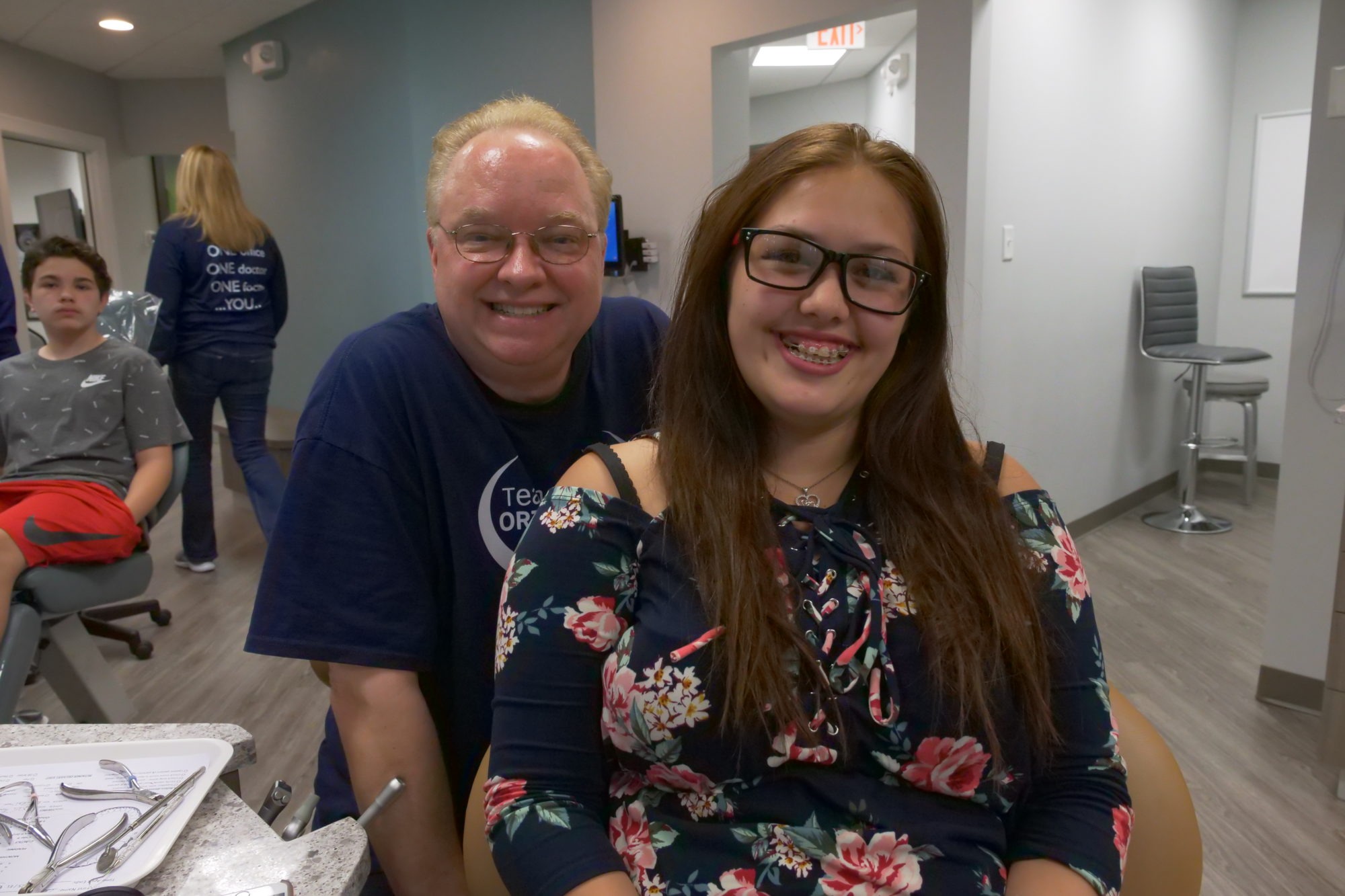
by | Oct 30, 2018 | General Articles

The phrase “timing is everything” is popular for a reason! It’s applicable in many situations, particularly when it comes to parenting, and that includes planning orthodontic treatment for your child. Trying to determine if, when, and what kind of help your child may need with their smile can be a little overwhelming. There’s so much information available that it’s easy to get confused by differing opinions from various sources, but Team Demas Orthodontics is here to help! Exploring the ins and outs of orthodontics doesn’t have to be a stressful experience. Our team is committed to providing clear, concise information you can understand about what a long-term plan for your child’s orthodontic care might look like.
The first step towards a straighter, healthier smile should always be an initial orthodontic evaluation. The American Association of Orthodontists recommends that all children have their first orthodontic consultation by around the age of seven, and we agree. This gives an experienced orthodontist like Dr. Demas the chance to look for and diagnose many common dental issues before they become more problematic. This kind of early intervention can often reduce the need for more intensive orthodontic treatment at a later age.
The idea of being proactive with your child’s oral health instead of reactive can be summed up by the process of two-phase treatment. This is a specialized service we offer for younger patients we anticipate needing orthodontics as they grow. Let’s take a closer look at what this treatment entails, and how it can be of benefit to your child’s smile and overall oral health!
What is two-phase orthodontic treatment?
Two-phase treatment is a process whereby a child will receive orthodontic treatment at two separate times, with a break in between. Generally, we will initiate the first phase of treatment when the child has a mix of primary and permanent teeth. This will be followed by a period of rest before the second phase begins, usually once the child has most or all of their adult teeth. Although braces or other orthodontic appliances are sometimes used during the first phase, they are much more common in the second phase of treatment. This will depend on the specifics of each individual case.
Two-phase orthodontic treatment is often recommended when we want to:
- create an optimal relationship between the teeth and jaws
- align the teeth, resulting in a straighter smile
- position the teeth and jaws for more pleasing facial symmetry
- create a better environment for the permanent teeth to grow in
Once Dr. Demas has completed a thorough examination of your child’s mouth, the first phase of treatment may be suggested if it appears that:
- he or she will be prone to a particular problem that we want to keep from developing (preventive treatment)
- he or she already has a developing problem that we want to intercept (interceptive treatment)
- your child’s jaw bones will need a little guidance as they grow (growth modification)

For the most successful results, we will time the first phase of orthodontic treatment to take advantage of the predictable stages in dental development. When we follow the patterns of normal childhood growth and development, we have the best chance of improving and correcting orthodontic issues early on. This is important, because many common dental problems can be treated relatively easily in a growing child, but as they get older and the jaw bones stop growing, these same issues may require more invasive treatment to correct.
While early treatment can achieve lasting results for many of these issues and lessen the impact of others, most patients will still require a second phase of treatment to complete the alignment process the first phase has begun.
How does two-phase treatment work?
In order to understand how two-phase treatment can benefit your child, it’s important to know how each phase works, as well as what happens during the resting period in between them.
Phase One
Phase one treatment helps develop a child’s jaw to better accommodate all the permanent teeth, as well as improve the way the upper and lower jaws fit together. This method of treatment has a number of benefits. It not only improves the ability to bite, chew, or even digest food more effectively, but may also reduce the risk of damaged teeth due to crowding, misalignment, or malformed jaws.
Phase one treatment helps to contribute to longer-term stability, which simply means that the teeth will stay in whatever position Dr. Demas guides them to. The second phase of treatment continues this stabilization by moving the teeth into their final desired positions. However, we generally hit the pause button on treatment in between the first and second phases. This is a period of time when the permanent teeth are emerging, and we like to give the teeth, jaws, and mouth a temporary break as they grow.
Resting Period
Once we successfully complete first phase treatment, there should be enough room to give the remaining permanent teeth a clear path to eruption. Teeth that have already been moved will be stabilized with either a space maintainer or fixed retainer.
Phase Two
This is where it all comes together! This phase will usually begin once all of your child’s permanent teeth have erupted. Braces or clear aligners will almost always need to be used for a time. Once that part of treatment is complete, fixed bonded retainers will be necessary to ensure their smile stays in place!

Here at Team Demas Orthodontics, we believe treatment should never take a “one size fits all” approach! Smiles are not created equally, and what works for one child may not work for another. That’s why Dr. Demas is dedicated to designing a unique treatment plan for every patient we see. If you’re in Southington or the surrounding communities, and want to learn more about how two-phase orthodontic treatment could improve your child’s oral health, get in touch with us to schedule a free consultation. This is the perfect time to take the first steps towards a bright, beautiful, and healthy smile for your child!
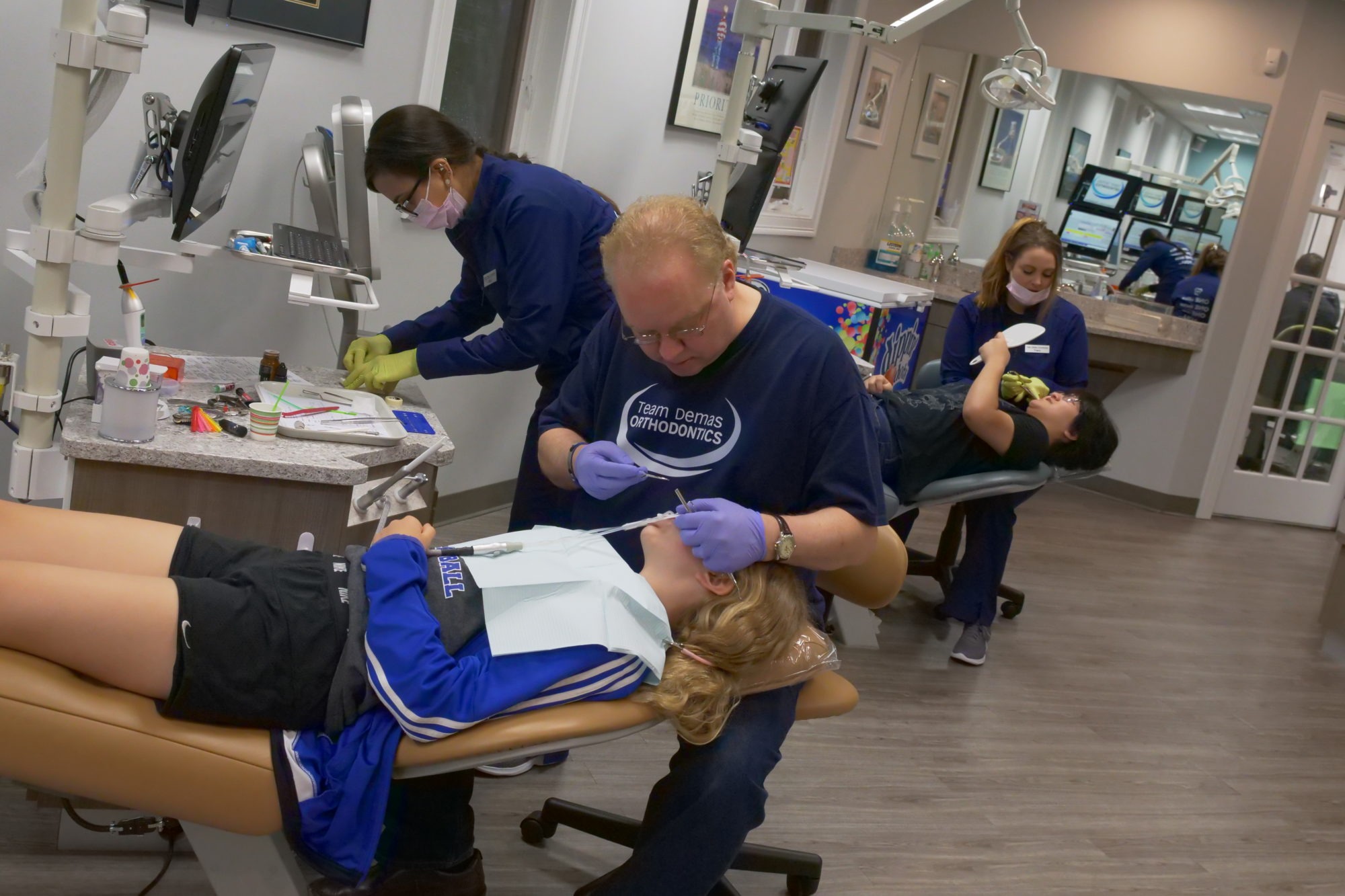
by | Sep 28, 2018 | Team Demas Orthodontics

Here at Team Demas Orthodontics, we know that there’s a lot to think about and consider before undergoing orthodontic treatment. We also know the hard work and dedication it takes to get the results you want. Throughout the process, you’ll find yourself learning quite a bit about orthodontics, and becoming more familiar with your teeth and all the incredible things they’re capable of. Over time, you’ll gain knowledge about the part braces or aligners play in moving your teeth, but one related subject you may be missing solid information on is wisdom teeth.
Wisdom teeth?
Yep, wisdom teeth! Because these late-bloomers aren’t really a common topic in orthodontics, it may be surprising to learn the role they can play in your overall oral health. We sometimes have patients (or parents) who worry that emerging wisdom teeth will interfere with orthodontic treatment, or fret that they will knock a straightened smile off-kilter. Let’s explore these teeth below to learn a little more about what they are, when to remove them and when to leave them alone, and what all of this means for you as an orthodontic patient.
What are wisdom teeth? What are they for?
Wisdom teeth are your third set of molars, the teeth that grow right at the back of your jaw. Although they don’t serve any useful function in the modern world, they played a large part in helping our ancestors properly chew and digest the coarse foods that composed most of their diet, such as meat, nuts, and roots. As we began evolving to a more varied diet, our jaws shrunk in response, rendering our wisdom teeth more or less obsolete.
In many adults, the wisdom teeth are missing entirely, or they never fully come through. For others, the wisdom teeth will come through in proper alignment with little more than a bit of slight tenderness. In those cases, further action generally won’t be required. But because the wisdom teeth grow in stages over time instead of all at once, if you do end up having an issue with yours, you may experience long periods of pain or discomfort as they erupt. By knowing what to expect, you’ll be able to work with us and your dentist in order to avoid any unnecessary suffering!
When should wisdom teeth be removed?
Wisdom teeth have often been preemptively removed as a way to prevent orthodontic crowding. However, most modern evidence has shown this to be unnecessary. If the goal of any medical procedure is to solve a problem for the patient and to improve their health, it follows that wisdom teeth erupting without difficulty can be monitored through regular dental check-ups, rather than removing them as a preventative measure.
There are, of course, some cases where removal of the wisdom teeth makes sense and is necessary. This may include situations where:
- there are recurring infections in the gums or cheeks, often due to wisdom teeth trapping food debris and the bacteria that forms as a result of that
- the wisdom teeth have developed serious decay
- the wisdom teeth are causing tooth decay in adjacent teeth
- the wisdom teeth have developed a cyst or abscess
- the wisdom teeth are impacted – coming in sideways, stuck beneath the gum, or are only partially erupted, which can lead to swollen, infected, and painful gums
Even if you have one or more of these issues as your wisdom teeth grow in, it doesn’t necessarily mean all of your wisdom teeth will need to be removed. In many cases, removal may be recommended for just the top or bottom wisdom teeth, or those on one side only.
Can wisdom teeth affect orthodontic treatment?
Many patients will begin their orthodontic treatment before the wisdom teeth start pushing their way through the gums. This is because wisdom teeth don’t typically make an appearance until your late teens or early twenties. The good news is, even if they start to emerge as you’re straightening your teeth, orthodontic treatment will generally not be affected. Most people are able to continue the treatment process easily and without interruption. Wisdom teeth can even be extracted while wearing braces if necessary, but if yours are coming through normally with no issues, it is unlikely removal will be recommended. You know the old saying – why fix it if it isn’t broken?

Can wisdom teeth affect the results of orthodontic treatment?
As mentioned above, your wisdom teeth tend to show up in your late teens to early twenties. Some patients may also see a slight shifting of their teeth around this time, too. Although this is part of a natural phenomenon known as relapse, it’s easy to see why people would believe wisdom teeth are the culprit when you consider the timing.
However, The University of Iowa took this theory on in a study involving sensors placed between the teeth of their subjects. Researchers compared the pressure on the sensors with and without wisdom teeth, and ultimately found that there was no difference between the two at all. This proved that wisdom teeth aren’t able to exert enough pressure on their own to cause other teeth to shift. But if erupting wisdom teeth aren’t a factor in the teeth drifting, you may be wondering what is.
The answer to that is surprisingly simple: we get older!
As we age, our teeth begin showing general signs of wear and tear, and a natural shifting may occur. This can cause our teeth to begin overlapping, moving them slightly forward. If the teeth begin to overlap, the upper teeth can press the lower teeth in towards the tongue. Our jaws are often still growing at this time as well, which can force the teeth into less than ideal positions.
If you’re a Team Demas orthodontic patient, you’ve probably heard Dr. Demas and the rest of our team talk about how important retainers are to the overall success of your treatment plan. Without regular retainer use, your teeth may begin shifting back towards their original positions, undoing all the work you’ve put into the orthodontic process. Wearing your prescribed retainer as directed by Dr. Demas is an incredibly simple yet highly effective tool to keep your teeth as straight as possible once your braces come off or you use your last aligner.

Trust Team Demas Orthodontics to give you a lifetime of straight smiles
It’s unlikely your wisdom teeth will affect the beautiful smile you’ve achieved with braces or aligners, but every patient and case is different. If you have any worries about the way your wisdom teeth are growing in, we recommend scheduling an appointment with your general dentist. He or she can take a look and let you know what you can expect throughout the eruption process. We’re also happy to set your mind at ease if you’re feeling nervous about your wisdom teeth affecting your smile.
At Team Demas Orthodontics, we want you to feel confident in your orthodontic treatment from start to finish. Dr. Demas will work closely with your dentist to ensure a smile that is aligned, healthy, and fully functional. If you have any questions or concerns about your treatment plan or your oral health, get in touch with us today. We care about your smile, your comfort, and your care!
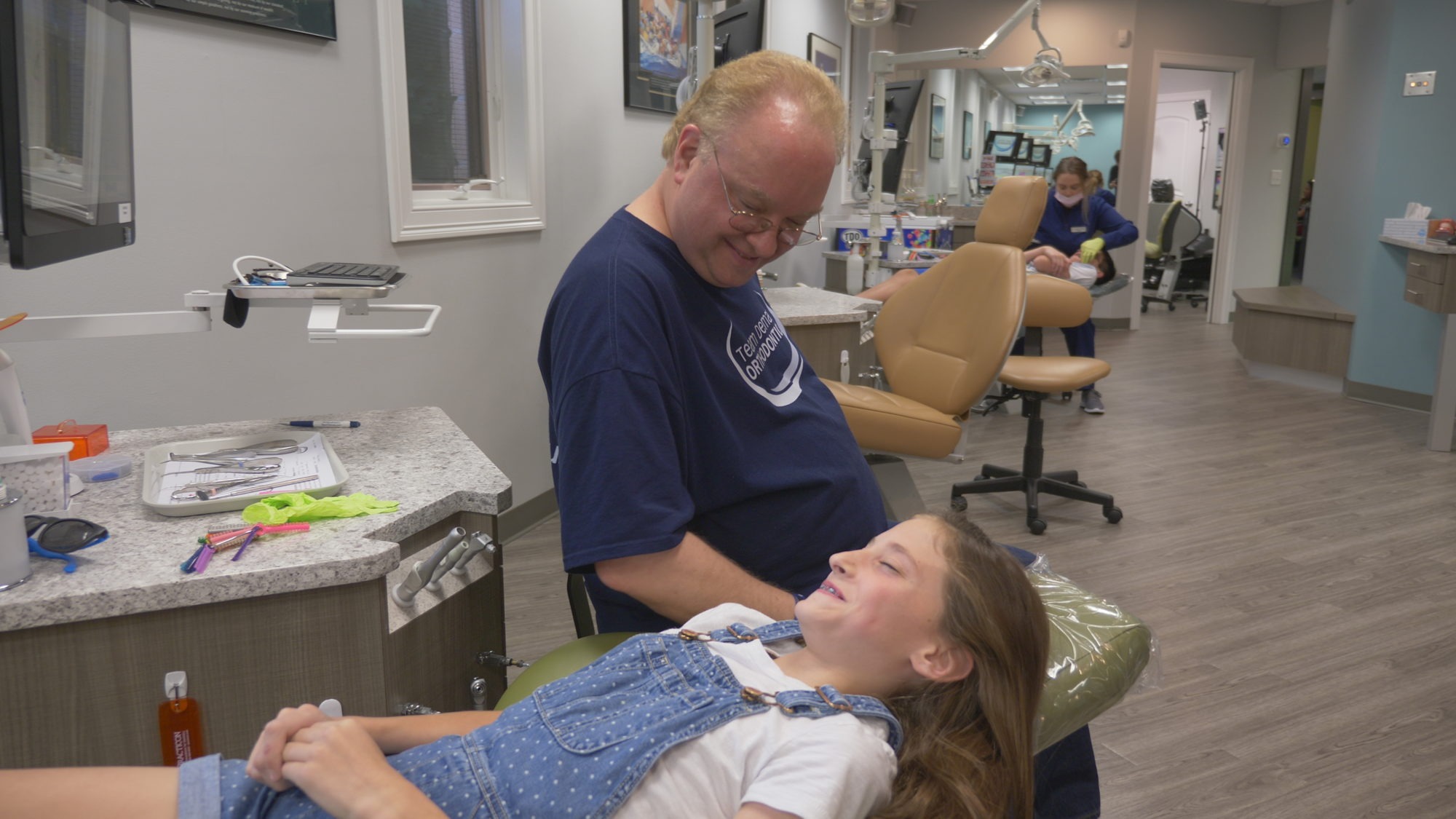
by | Aug 30, 2018 | Uncategorized

Summer is one of the most popular times of the year to begin orthodontic treatment, with many parents opting to have braces put on their kids before school starts back. If you’re a new braces patient, you might be wondering what the next few months will bring as you head back to homeroom and try to adjust to student life with an orthodontic appliance. You may even be feeling a little nervous about navigating braces at school for the very first time. This is a common worry among our younger patients, but fortunately, it doesn’t take long to get used to life with braces. Before you know it, they’ll be just another part of your daily routine!
Here at Team Demas Orthodontics, we know that the beginning of a new school year is a pretty big deal. There are new friendships to explore, new teachers, to meet, new subjects to learn, and new memories to make. Wearing braces at school is just one more new thing to experience! We want to help make this one of your best years yet by giving you the tools you need to keep your orthodontic treatment on track and your smile shining brightly in the coming months. Let’s explore a few of our top tips for surviving back-to-school season when you’re new to braces!
Keep a basic braces care kit in your backpack or locker
Braces do require a little extra care and attention. You might have a minor issue or two crop up from time to time during the school day, like food getting stuck in your brackets or a stray wire poking into your cheek. Stay prepared for any braces-related dilemmas by keeping a handful of helpful items close by! One of the easiest ways to keep up with these is to find a small pouch or bag to keep them in, then put it in your locker or backpack permanently. Some of the items we recommend our patients include are:
- a soft-bristled toothbrush
- fluoride toothpaste
- floss or ortho picks
- orthodontic wax (to cover any areas causing irritation)
- extra rubber bands (these should be changed out frequently throughout the day)
- a small mirror (to check you don’t miss any rogue food particles in your braces)
- lip balm
- a small cup for rinsing
- an unsharpened pencil (the eraser end can be used to push stray wires back into place)
Take advantage of any short breaks you get as well as your lunch period to indulge in a bit of dental care. We recommend brushing your teeth after you eat, as well as flossing if you have the time and space to do so. If you find your braces are causing minor soreness or irritation occasionally, a pea-sized amount of orthodontic wax over the problem area can provide relief, and stray wires can be pushed back into place using the eraser end of a pencil. Having items like these on hand in a pinch will save you a lot of time, trouble, and discomfort throughout your orthodontic journey, and we think anything that makes the treatment process easier belongs on the honor roll!
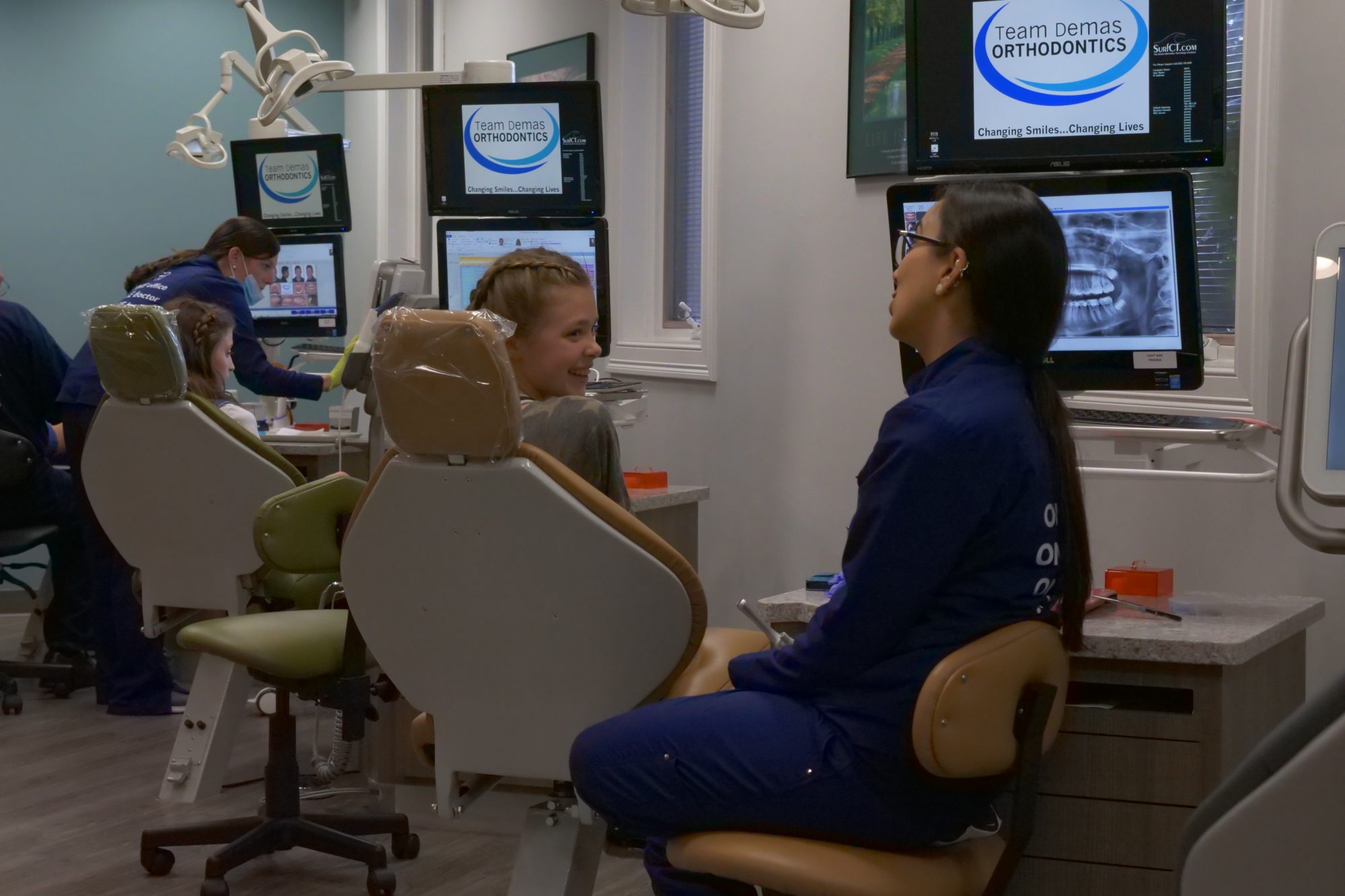
Bring a water bottle to school with you
There’s a reason eight glasses of water daily is the gold standard. Staying hydrated is important, and drinking water is excellent for your overall health, but did you know it’s a great way to flush out any food that’s stuck to your teeth or braces? It’s also really helpful for that dry mouth feeling that can sometimes come with newer braces. Bring a full water bottle to school with you in the morning and drink it throughout the day for the full benefits. We recommend sticking to plain water over sugary drinks like soda, fruit juice, or sports drinks, as these can cause staining and increase the risk of cavities developing. If you do indulge in these sweet drinks from time to time, use a straw to keep the sugars away from your teeth.
Get familiar with your school’s lunch menu
Do you prefer buying lunch at school over bringing it from home? If so, just remember to stick to the same basic rules of braces care, including the food restrictions. To protect your braces, avoid anything too hard, sticky, or crunchy. Check out the menu ahead of time and make sure you’ll have braces-friendly options available, like pasta, mac and cheese, soups, cooked vegetables, and lean meats. You should also stick to healthier snacks such as bananas, applesauce, and yogurt. These are easier on your orthodontic appliance as well as being good for you! Keep treats like gum, candy, popcorn, chips, etc. on the back burner until your braces come off. This will help prevent any potential mishaps with your braces, like breaking a bracket or wire, which is something you don’t want happening anywhere, let alone in the middle of the school day!
Invest in the right gear for gym class
If you’re a student-athlete or have regular gym or P.E. classes, we recommend an orthodontic mouthguard to protect both your braces and your mouth. Designed specifically to be worn with braces, these are the easiest way to save your braces from damage and your mouth from injury during physical activities. Orthodontic and non-orthodontic models are affordable, and widely available at most sporting goods stores. Dr. Demas is also happy to recommend and order one for you as well, if you prefer! Though we strongly encourage orthodontic mouthguards for our braces-wearing patients, any mouthguard is better than none at all.
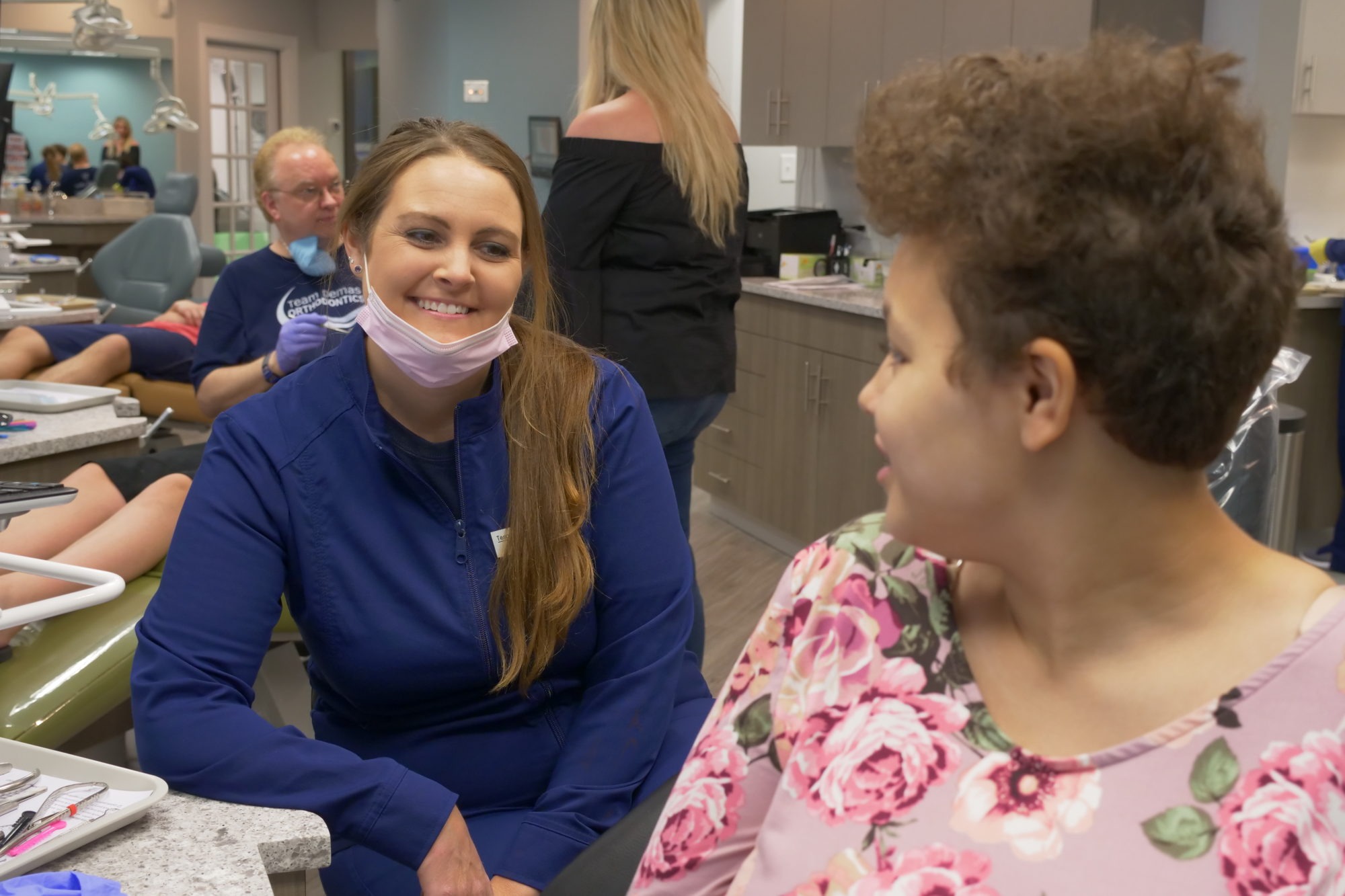
Head back to school with a beautiful smile from Team Demas Orthodontics
Like any new adventure, going back to school with braces for the first time will have its own set of challenges. But if you use our tips to help you settle in, you’ll find your way to a straight-A smile in no time! Dr. Demas and the rest of our skilled staff are committed to making your transition from summer vacation into the school year as a braces patient as stress-free as possible. If you or your parents have any questions or concerns about how to best navigate having braces at school, get in touch with us. We’ll do everything we can to set your mind at ease and get you off to a great start!
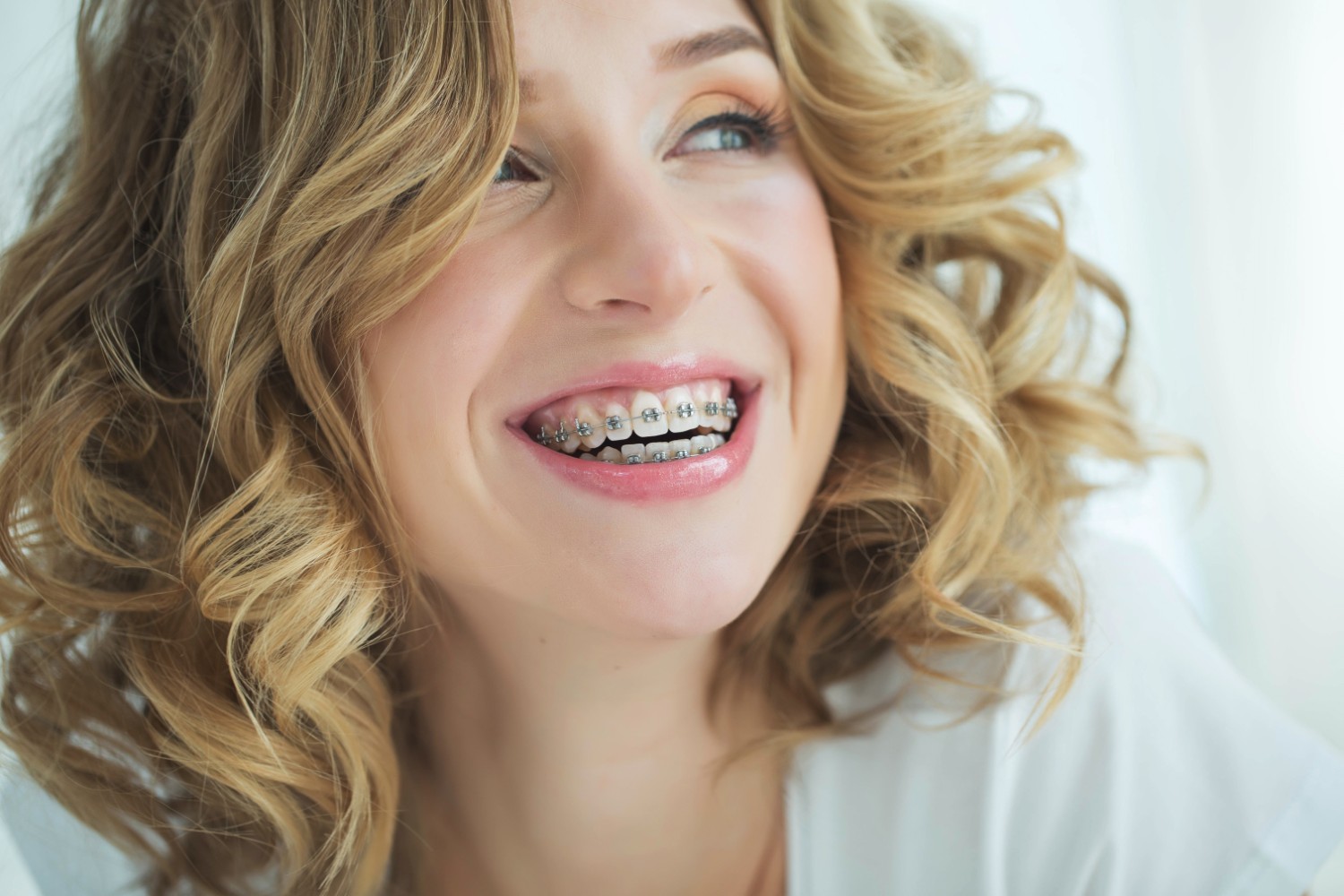
by | Jul 31, 2018 | Uncategorized
We all want to have an attractive smile, but did you know all the ways it can positively impact your life? Your smile is not only the first thing people notice about you, it’s also the feature they’re most likely to remember. Aesthetics are important, and according to multiple studies, a straight, healthy smile can make you appear more approachable, trustworthy, and even more successful! Here at Team Demas Orthodontics, we love creating beautiful smiles for patients of all ages. One way we achieve that is through orthodontic treatment with braces. While braces are incredibly effective at straightening teeth, they also have a number of benefits that go beyond the cosmetic. When you correct tooth and jaw misalignment, it can improve your appearance and boost your overall oral health as well. To take a look at what braces have to offer you besides a straighter smile, keep reading below!
Understanding the basics of treatment with braces
To gain a better understanding of all the benefits braces offer, it helps to have some understanding of how they work. Traditional braces are generally made up of metal or ceramic brackets, wires, and tiny rubber bands or elastics. The brackets are attached to your teeth, and the wires and elastics are used to tie them together. These components work together to exert gentle pressure in specific directions, and this is what will move your teeth into the desired positions over time.
Braces are also able to help reshape the jawline by dissolving bone that is replaced with the new bone growth that is better able to support the teeth in their straightened positions. In addition to being cost-efficient, braces are incredibly effective at correcting several dental issues, including:
- difficulties with chewing or biting
- misaligned teeth or jaws
- excessive wear and tear of teeth
- teeth with excessive spacing
- overlapping or crowded teeth
When you schedule your first visit with Dr. Demas, he will listen to any concerns you have, and thoroughly examine your teeth and jaws to help him determine if orthodontic treatment is needed, and if braces could be the right fit for you.
Benefits of braces beyond straightening the teeth
Misaligned teeth and jaws can have an impact on everything from your appearance to your health to everyday activities like eating and speaking. Your regular oral hygiene routine may also be more difficult to maintain or be less effective than it once was. Braces are able to address and correct many of these issues, as well as improve lesser-known issues such as:
Chewing
When your teeth or jaws are out of alignment, it can lead to difficulties with biting and chewing your food properly. Over time, this can lead to excessive wear and tear on your teeth, and may also lead to a weakening of the jaw, which can cause painful chewing.
Digestion
Chewing your food is the first step of the digestive process, and also the most crucial one. If you have misaligned teeth that prevent you from chewing properly, it can have a detrimental effect on digestive system, as food will pass through much more slowly.
Speech
The alignment of our teeth and jaws can affect numerous parts of the body, some of which may surprise you. For instance, misaligned teeth can influence the placement of the tip of the tongue. This placement is essential to properly form certain sounds, such as ‘t’, ‘n’, and ‘d.’ Braces are often able correct speech issues such as this by aligning the teeth, making way for proper placement of the tongue. An experienced orthodontist like Dr. Demas can identify any speech issues you may have that are related to misalignment, and devise the most effective solution for you based on your specific needs.
Oral health
When you have teeth that are crooked, crowded, or overlapping, brushing and flossing regularly and effectively can be a challenge. If you’re unable to maintain a good oral hygiene routine, it can create favorable conditions for a buildup of plaque and bacteria, increasing your risk for dental issues such as:
- tooth decay
- gum disease
- cavities
- gingivitis
As common as these ailments are, they are also preventable. Orthodontic treatment like braces can move the teeth into more optimal positions, making it easier to keep your teeth and gums healthy and clean.
Jaw alignment
If you’re dealing with misaligned teeth, you may notice it affecting your jaw muscles and joints. While joints will adapt to bad positioning, they will often compensate in a way that can cause damage, which is why we see so many jaw issues and misaligned teeth together. Some of the symptoms you may experience with improper jaw alignment are:
- headaches
- jaw that pop or “creak”
- pain in the jaw, neck, or shoulders
- sleep disorders
Team Demas Orthodontics provides customized braces treatment that can minimize or eliminate issues like these by properly aligning your teeth and jaws, resulting in a smile that looks good and feels great!
Bone erosion
If tartar and plaque are allowed to build up between the teeth and along the gum line for any reason, it may lead to the damage or destruction of the bone underneath the teeth. This can cause a number of symptoms, including loose teeth. If one of these fall out, the gums around it can erode. When you have noticeable gaps or spaces between your teeth, it can create a similar type of bone erosion due to the misalignment putting too much pressure on the jawbone. Braces can bring the teeth back together, relieving any unnecessary pressure and reducing or eliminating any symptoms that go along with it.
Explore what braces can do for your smile with Team Demas Orthodontics
Straight teeth are just the beginning at Team Demas Orthodontics. We’re proud to create beautifully aligned smiles that function to their full potential for all of our patients! Our team knows the difference a healthy smile can make, and works hard every day to give you a rewarding orthodontic experience, from start to finish. You’ll receive clear communication, compassionate care, and a warm welcome from us every time you walk through our door, because we are passionate about building relationships with our patients that last as long as your smile will!
If you’re in Southington or the surrounding areas, and want to learn more about how braces can benefit you far beyond a straighter smile, get in touch with our office today. Team Demas Orthodontics is an accomplished practice that creates top-quality smiles every day, and we would love to give you the smile you deserve!

by | Jun 22, 2018 | Invisalign, Orthodontic Treatments
Are there foods I can’t eat with braces? When you first get braces, it can feel like you have very limited options in terms of what you can eat. Dr. Demas, a leading orthodontist in Southington, will help you understand the limitations of braces and how you can best care for them by putting thought into the foods you or your child eats.
(more…)
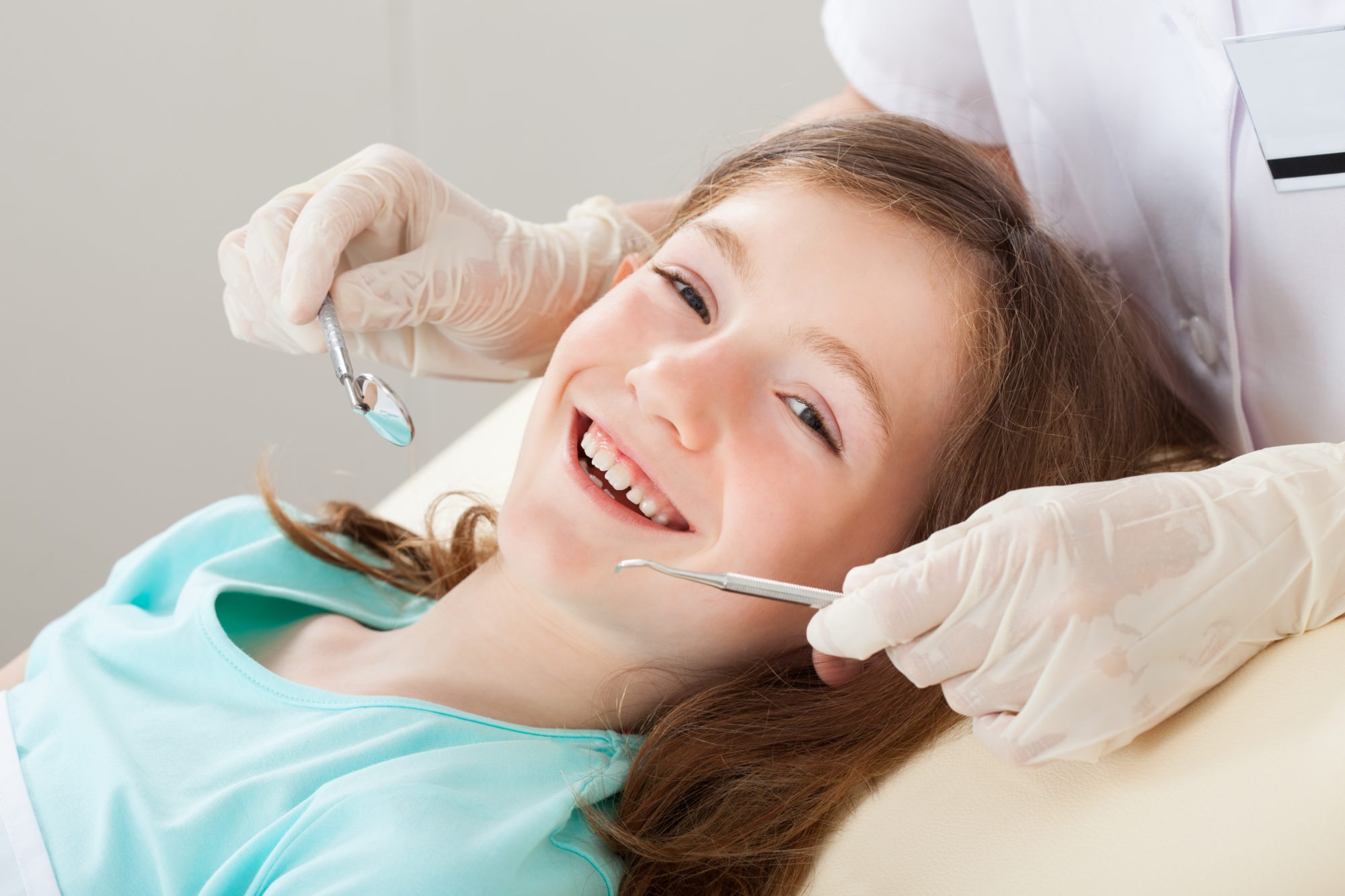
by | Jun 20, 2018 | Uncategorized
As a parent, you often find yourself waiting for your child to tackle, and then master, a whole list of firsts. First smile, first steps, first time they ride a bike, their first day of school. As exciting as it can be to watch our babies grow up and do learn new things, it can also be a little overwhelming! That is especially true of the times when you are not sure what to expect. Planning your child’s first orthodontic visit can be one of those times, but Team Demas Orthodontics wants to take the worry out of this experience. We feel that a child’s initial visit with us is also the most important one. If you only get one chance to make a good impression, we want to take full advantage of this opportunity to wow you!
The first orthodontic visit is a chance for us to meet and get to know families that are new to our practice. It also gives us the chance to familiarize parents and children alike with our Southington office, and the treatments and services we are proud to offer. At first glance, things may seem similar to an appointment with a general dentist. However, we do things differently, something that begins with the first time you walk through our doors. To help you feel more confident and less anxious about this particular parenting unknown, let us walk you through what you can expect from your child’s very first orthodontic appointment with Dr. Demas!
Taking the first steps towards your child’s best smile
When you enter our Southington office, you will receive a warm welcome from one of our patient coordinators. Once they take some information from you, you will be given a tour of the office. This gives us a chance to show you all the care and attention we have put into creating an environment that every patient will feel comfortable and relaxed in. Our lounge area is great for both adults and kids, and for our patients who are young (or just young at heart), our game room is a fun place to chill out before or after an appointment!
Once you have been shown around the inner workings of the office, we will generally want to photograph your child’s teeth and take an x-ray. This will give us a look at what is happening beneath the surface of the gums, such as the position and growth of the bones and joints, as well as any unerupted teeth.
At this time, you will meet Dr. Demas. He will perform a thorough examination of your child’s mouth and teeth. You may be asked if you have noticed your child having any difficulty with chewing or swallowing, or if you have heard his or her jaw making any unusual noises. It is from this analysis that Dr. Demas will be able to make a proper diagnosis and create a customized treatment plan for your child.
Depending on your child’s developmental stage when it comes to their teeth and jaws, we may recommend starting some form of treatment right away, or we may encourage you to schedule periodic check-ups for them until we can determine the best time to start treatment.
This initial orthodontic evaluation typically lasts about an hour. It is important to us that parents feel like they have plenty of time to ask questions and discuss concerns without feeling rushed.
Walking you through the treatment options
Whether treatment is indicated now or later, this first appointment is the best time to talk about the treatment options available to your child. Dr. Demas will discuss all of these options with you, and explain to you what can be expected at different stages of the treatment process. He will also review several other topics, including:
- how we expect orthodontic treatment will benefit your child’s oral health
- what treatment options are available to help correct your child’s specific dental issues
- how much treatment is likely to cost
- available payment plans and financing options
- how long we expect the treatment process to take
Once your questions have been answered, and Dr. Demas has mapped out a treatment plan, we will go over all the fees associated with the treatment process. Because every patient we see has their own specific needs and goals, treatment costs vary on a case-by-case basis. Dr. Demas and the rest of our team work hard to provide quality orthodontic care that is affordable! We will check with your insurance company for you to determine your eligibility for orthodontic benefits, and we are happy to file the necessary paperwork on your behalf. We also accept cash, credit cards, health savings and flexible spending plans to help offer a variety of payment plans that will suit a wide range of budgets. You can rest assured we will always do our best to help you find the most comfortable financial option for you and your family!
Orthodontic treatment can sometimes be a pretty long process. As we work to create a healthier smile for your child, you can expect to see us on a regular basis. We want your child to look forward to their appointments with us, and go out of our way to keep our office atmosphere warm and welcoming, as well as up to date on the latest orthodontic techniques and technology. And you know your child is in good hands here, as Dr. Demas is one of only two orthodontists in the state who is also an experienced pediatric dentist.
If your family is in the Southington area and it is time for your child’s initial orthodontic evaluation, get in touch with us today. There is no better time than now to take the first step towards a healthy, beautiful, and confident smile for your child!

by | Jun 17, 2018 | retainers
Congratulations you have completed orthodontic treatment. Your braces have positioned and straightened your child’s teeth to ensure they have a lifetime of healthy smiles. Now it is time for the next phase of treatment which will keep those beautiful teeth in position – wearing a retainer. We will go into more detail on the importance of wearing retainers below. Keep in mind that when braces are removed, your teeth would want to move back to their original positions. Wearing retainers after orthodontic treatment will prevent this from happening.
(more…)

